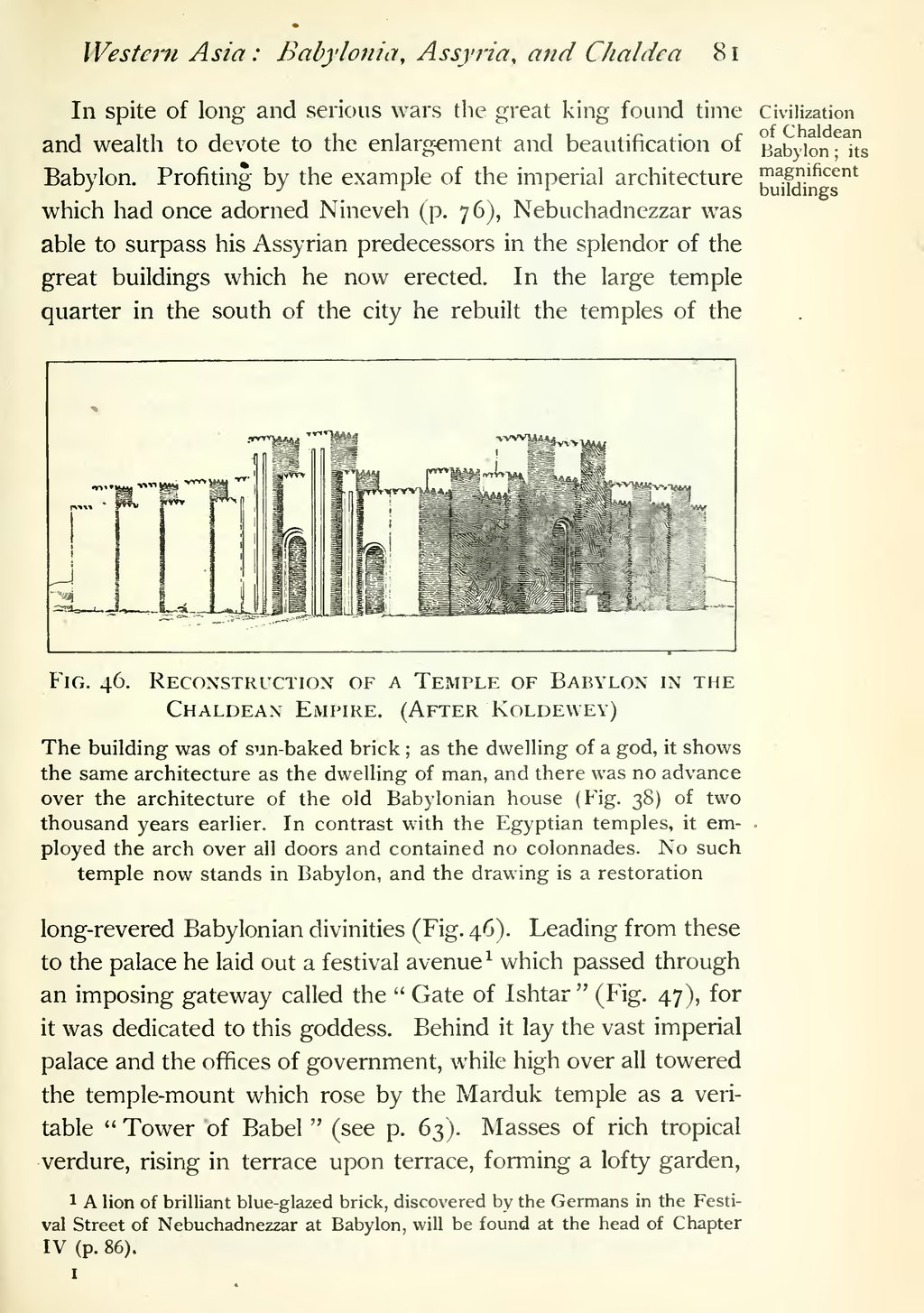Western Asia : Babylonia, Assyjia, and CJialdea 8 1 In spite of long and serious wars the great king found tinre civilization and wealth to devote to the enlarg-ement and beautification of Babylon ^ts Babylon. Profiting by the example of the imperial architecture bu^fj/if^g"^ which had once adorned Nineveh (p. 76), Nebuchadnezzar was able to surpass his Assyrian predecessors in the splendor of the great buildings which he now erected. In the large temple quarter in the south of the city he rebuilt the temples of the Fig. 46. Recoxstruction of a Temple of Babylon in the Chaldean Empire. (After Koldewey) The building was of sun-baked brick ; as the dwelling of a god, it shows the same architecture as the dwelHng of man, and there was no advance over the architecture of the old Babylonian house (Fig. 38) of two thousand years earlier. In contrast with the Egyptian temples, it em- ployed the arch over all doors and contained no colonnades. No such temple now stands in Babylon, and the drawing is a restoration long-revered Babylonian divinities (Fig. 46). Leading from these to the palace he laid out a festival avenue^ which passed through an imposing gateway called the " Gate of Ishtar" (Fig. 47), for it was dedicated to this goddess. Behind it lay the vast imperial palace and the offices of government, while high over all towered the temple-mount which rose by the Marduk temple as a veri- table " Tower of Babel " (see p. 63). Masses of rich tropical verdure, rising in terrace upon terrace, forming a lofty garden, 1 A lion of brilliant blue-glazed brick, discovered by the Germans in the Festi- val Street of Nebuchadnezzar at Babylon, will be found at the head of Chapter IV (p. 86). I
